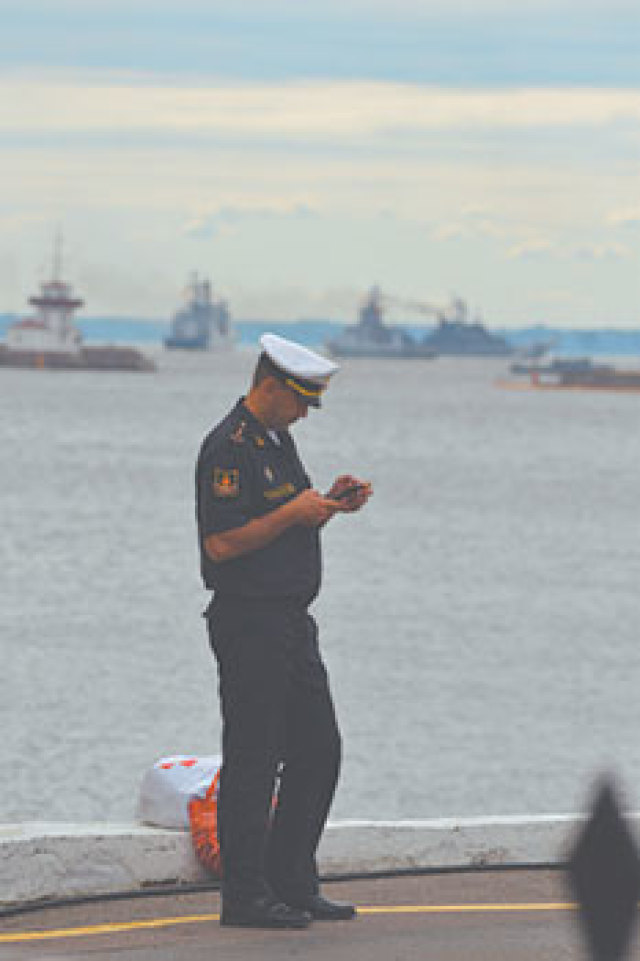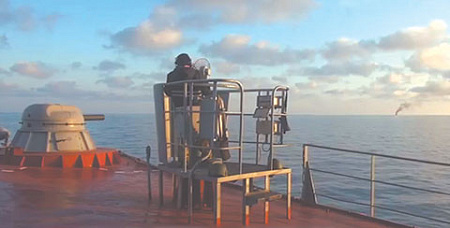In what condition are the Navies of the countries of the Black Sea basin
The importance of the Black Sea for ensuring the security of Russia, Europe and military operations in the Middle East has been growing since 2010 and until now. There are several reasons for this. This is the proximity of the region to the armed conflicts in Syria, Libya, Iraq and Nagorno-Karabakh. This is the deployment of anti-missile defense (ABM) launchers and US medium-range cruise missiles in Deveselu (Romania). And, of course, Russia's special military operation in Ukraine.
The economic importance of the region is due to the developing trade and the sea routes passing through here – both traditional and projected. The presence of oil and gas fields and strategic gas pipelines here, as well as significant fishing.
The Black Sea region has the greatest military and political importance for the countries of Europe, the Near and Middle East because of its geographical location.
As the experience of the use of the Russian Navy in 2015-2019 in Syria against IS militants (the organization is banned on the territory of the Russian Federation) shows, despite the fact that the Black Sea is closed, control over it makes it possible to operate in a number of theaters of military operations (theater of operations): in the Caucasus, Asia Minor and Eastern Europe, in the western part Central Asia, the Middle East and the Eastern Mediterranean – in the presence of appropriate weapons.
At the same time, the peculiarities of entering the water area, its "closeness" and the legal status of the Black Sea allow limiting the passage here of naval vessels of states not adjacent to it. In other words, according to the Montreux Convention, large ships of the naval forces of foreign states cannot pass through the Bosphorus and Dardanelles Straits without hindrance.
THE GENERAL STATE OF THE NAVY OF THE BLACK SEA COUNTRIES
The Black Sea basin region includes Russia, Turkey, Bulgaria, Romania, Ukraine, Georgia and Abkhazia (not officially recognized by any Black Sea state except Russia). At the same time, Georgia does not have a naval force - after the "08.08.08 war" (August 2008), it abolished its Navy, and transferred the material part to the marine guard.
Russia is updating its Navy most actively. Since 2014, more than 30 new warships and boats have been delivered, including medium-range cruise missiles of the Caliber type. Among them are three frigates (project 11356), three small missile ships (project 21631), two patrol ships (project 22160), six submarines (project 636.3), two naval minesweepers (project 12700). As well as new multi-purpose fighters (Su-30SM) and much more, including anti-sabotage, amphibious boats and support vessels, land-based countermeasures and coastal complexes of anti-ship missiles (PKR). At the same time, the modernization process takes place under the conditions of sanctions pressure from European countries and the United States.

The highest value for the fleet of any state in the world is a well-trained and motivated officer. Photo by Vladimir Karnozov
The Black Sea Fleet (Black Sea Fleet) of the Russian Federation has taken the position of the dominant force, which not only controls the Black Sea basin, but also appears to be a serious force in the eastern Mediterranean.
The reunification of Crimea and Russia in 2014 made it possible to improve and develop a well-organized and extensive system of basing coastal and naval units, which provides control over most of the Black Sea basin.
This event also made it possible to remove the restrictions that Ukraine imposed on the renewal of the Black Sea Fleet: since 2014, Russia is no longer obliged to coordinate it with Ukraine as a state. Prior to that, all changes in the composition of the Black Sea Fleet were regulated by the annex to the Kiev Agreements of 1997 and the Kharkiv Agreements of 2010, which did not allow updating the combat personnel without coordination with Ukraine.
Important circumstances for the development of the infrastructure of the Black Sea Fleet were the rapid buildup of the grouping of troops on the Crimean Peninsula and the availability of the necessary production facilities for the construction of the required number of ships. According to the development plans of the Russian Navy, the Black Sea Fleet will continue to receive comprehensive and high-quality replenishment. In the next five years, it should include corvettes (project 20380), patrol ships (project 22160), small rocket ships (project 22800).
ROMANIA AND BULGARIA
Romania and Bulgaria have similar problems with naval armament. The main one is the insufficient financing of defense, which does not allow the purchase of new combat units of the fleet or to carry out a serious modernization of existing ships.
Most of the naval forces of Romania and Bulgaria date back to the days of the Warsaw Pact, when both countries were satellites of the USSR. At the same time, the Bulgarian Navy is better equipped today than the Romanian Navy. In particular, the Bulgarian Navy has four frigates on its balance sheet (one Soviet, two Belgian–built in the 1970s and 1980s), two Soviet anti-submarine corvettes, three missile boats, and four minesweepers. However, these ships do not have combat-ready air defense systems, nor serious strike or anti-ship missile weapons.
Romania produced its warships relatively independently, in which it achieved very controversial successes. The Romanian Navy includes one submarine, three frigates, four corvettes and four missile boats, four minesweepers and a minelayer. Like the Bulgarian, the Romanian Navy cannot pose a threat to the Russian Black Sea Fleet: their material base is outdated, and the necessary funding is not available.
Nevertheless, both Romania and Bulgaria are members of the North Atlantic Alliance. And as such, they have a number of naval bases and support points (the ports of Varna in Bulgaria and Constanta in Romania), which can potentially be used by American, French, Italian or British forces.
At the same time, it should be noted that Romania has ground-based launchers and detection systems. They can pose a threat to ground targets equipped with cruise missiles and to air targets equipped with air defense systems.
In addition, it should be taken into account that the Romanian Air Force has qualitatively updated its composition – American F-16A were purchased from Portugal for them.
However, the weakness of almost all components of the Navy and the forces accompanying its deployment are obvious. The Rubezh coastal missile systems in operation in Bulgaria and Romania are armed with outdated P-15 Termit anti-ship missiles, and the air defense systems, also consisting of Soviet complexes, are not able to fully ensure the deployment of the Navy on their own.
Turkey
Turkey is the most important player in the Black Sea basin: it controls the Bosphorus and Dardanelles Straits, which are the only exit from the Black Sea. The Montreux Convention gives the Turkish authorities the right to regulate the movement of civilian and military ships through the Black Sea Straits. Accordingly, regardless of its real military forces, Turkey has levers of pressure on the Black Sea and non-Black Sea powers with interests in this region.
Prior to the beginning of the strengthening of the Black Sea Fleet of Russia, conducted since 2014, the Turkish fleet was the leader in total tonnage of the combat component among all fleets of the Black Sea countries. As of 2016, it consisted of 12 submarines, 16 frigates, 10 corvettes with guided missile weapons (URO) and 19 missile boats. On April 30, 2016, the first Turkish-built universal landing ship was launched. The Turkish Navy is expected to be replenished with new frigates and corvettes. But these plans may be postponed indefinitely due to Turkey's economic difficulties.
Despite the impressive ship composition and fairly high defense costs, Turkey cannot boast of favorable security conditions at all. In the south and southeast of it, a large–scale conflict is unfolding in Syria and Iraq, in the north - the conflict in Donbass and Eastern Ukraine. The sluggish territorial differences between Turkey and Greece in the eastern part of the Mediterranean Sea have not gone away.
The most important factor weakening the Turkish defense and its Navy is the geographical location. Almost the entire territory of Turkey is surrounded by the sea – and military cover of the entire length of the sea borders is not possible. In other words, the existing Turkish Navy is not able to maintain defense along the entire perimeter of the maritime borders.
Ukraine
As a result of the division of the Black Sea Fleet of the USSR following the Kiev agreements of 1997, Ukraine received a rather impressive number of ships that gradually became obsolete and were written off. Despite significant shipbuilding and ship repair capacities, the ship's composition of the Naval Forces of Ukraine was increasingly worn out over time. And the number of ships adopted after the country gained independence was frankly minuscule.
The catastrophe for the Ukrainian Navy came in 2014, when almost all of their combat personnel turned out to be under the control of the Russian Federation in Crimea: more than 50 ships and vessels of the Ukrainian Navy came under the control of the Russian Federation. Despite the fact that Russia transferred some combat units to Ukraine, in practice, the Ukrainian Navy lost almost all the main components of its combat capability. The suspension of the transfer of ships of the Ukrainian Navy occurred due to the escalation of the conflict in the Donbass.
The ambitious program of qualitative renewal of the Ukrainian Navy has not been implemented due to repeated leadership changes, constant personnel changes, lack of production competencies and initiative on the part of the military leadership. And most importantly – due to chronic underfunding.
The construction of the project 58250 corvette was frozen, and the construction of the Lan-type missile boats was not even started. Neither minesweeping ships nor small submarines were purchased. The only replenishment of the Ukrainian Navy's combat personnel were the small armored river boats "Gyurza-M" (however, the seaworthiness of the boats, the condition of the weapons, dynamic characteristics and booking raised questions), as well as the amphibious assault boats "Centaur" and old American patrol ships of the "Island" type.
After the start of a special military operation in 2022-2023, all major ships of the Ukrainian Navy were destroyed.
DEVELOPMENT PROSPECTS
The further development of the naval forces of the Black Sea basin states, among other things, will depend on the growing tension between the North Atlantic Alliance and Russia. Theoretically, the need for fleet renewal can be met not only by building your own ships, but also by buying them abroad. In practice, this opportunity turned out to be blocked for Russia due to the sanctions regime (the well-known story of 2014 with the French helicopter-carrying universal landing ship Mistral). Tensions in the Middle East remain an important factor of development, taking into account the participation of Turkey and Russia in conflicts in this region.
If we talk about how the navies of individual countries will look like, then two factors should be taken into account here.
First of all, this is the amount of funding; the main players – Russia and Turkey – will continue to increase their strength, and Bulgaria and Romania, not to mention Ukraine, are unlikely to be able to finance this extremely expensive industry. Secondly, it is necessary to take into account the positioning of the naval forces and the assessment by each of the states of the role of the Black Sea basin in ensuring their economic interests and national security.
Vasily Ivanov
Vasily Ivanovich Ivanov is a journalist.

